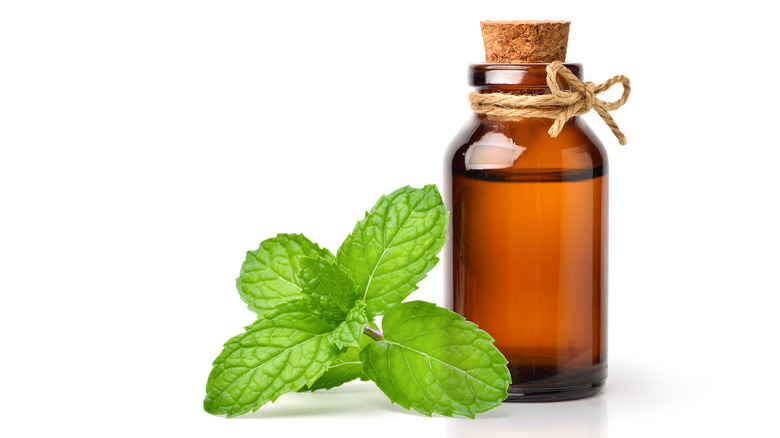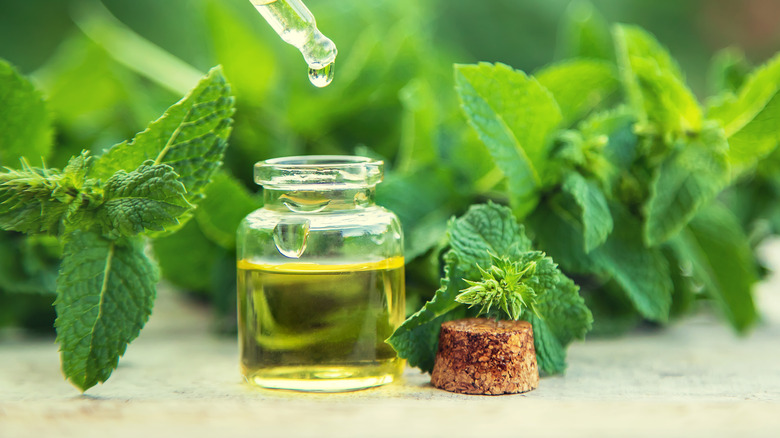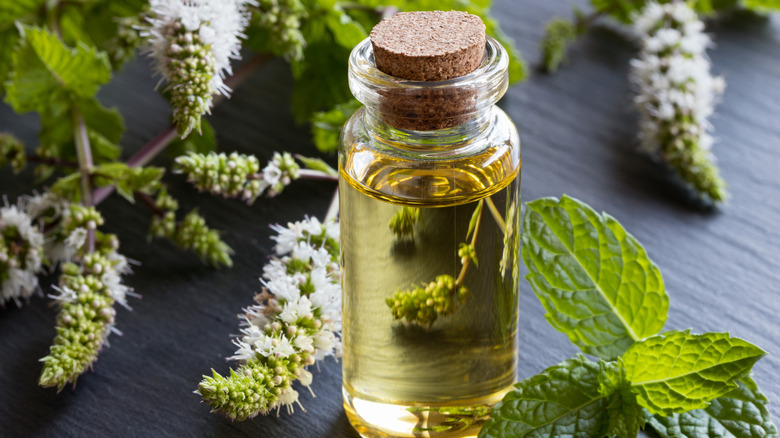Can Peppermint Essential Oil Help Manage Symptoms Of Diabetes?
Whether you are biting into a chocolate-covered peppermint patty or sipping on a peppermint tea, the cooling, refreshing taste of anything flavored with peppermint can be a delightfully invigorating experience. Commonly used to bring a sweet and cooling mint flavor to a dish or drink, peppermint is actually a hybrid plant between the spearmint and wild mint plants, according to WebMD.
Peppermint extracts and oils are used in a variety of ways due to the versatility and benefits of the peppermint plant itself. The plant has been said to have properties that help with a number of health issues, including flatulence, nausea, indigestion, and even some nerve pain (via Medical News Today). There are a number of ways in which peppermint is utilized to aid in homeopathic health remedies. Of the most common, peppermint oil, which is an extract from the stems and leaves of the plant, provides a host of unique benefits, including providing some relief from symptoms associated with conditions like diabetes (via Livestrong).
Can peppermint oil help diabetes symptoms?
While there's been some information published about the use of peppermint to aid in reducing blood sugar spikes, these studies refer primarily to the use of the peppermint plant or plant extracts. One study, published in Biomedicine & Pharmacotherapy, examined the blood sugar effects of peppermint oil in mice.
Their findings were promising, yet peppermint oil, like many essential plant-based oils, is not recommended for ingestion by humans. Though, according to WebMD, peppermint oil is listed as "likely safe" when consumed. Some companies provide eccentric coated peppermint oil capsules that provide the benefits of ingesting the oil with lowered risk (via Medical News Today).
When consumed, it has been suggested that peppermint oil can aid in regulating blood sugar, reducing sugar cravings, and providing calming effects to stomach issues, according to Livestrong. Alternatively, peppermint oil can be used through both inhalation and topical applications to provide health benefits or relief.
Other ways to use peppermint oil
The process of inhalation can be as simple as holding the container of peppermint oil a few inches below the nose while breathing deeply. The oil can also be added to boiling water for steam inhalation or worn in diffuser jewelry for personal inhalation throughout the day (via Medical News Today).
A study published in the Avicenna Journal of Photomedicine indicated that inhalation of peppermint oil seemed to provide a temporary boost to breathing abilities. The inhalation of peppermint oil is said to have the ability to reduce appetite and sugar cravings. While these effects are yet to be proven, testing peppermint oil inhalation for appetite or sugar craving reduction produces very little risk (via Sonoma Lavender Co.). It's also said that inhalation can aid with nausea (via Medical News Today).
In a topical solution, such as a lotion, oil, or cream, peppermint oil is said to have mild pain relieving properties, according to the National Center for Complementary and Integrative Health. More studies are needed, but oils or lotions made with peppermint oil may provide some relief.


